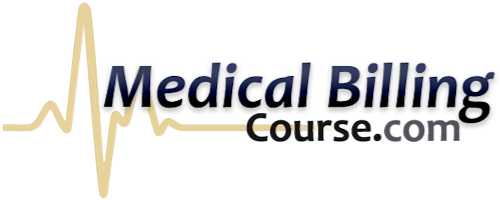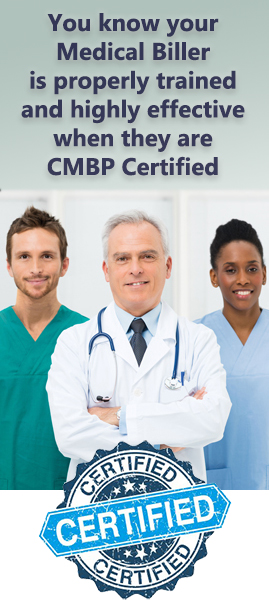- 08/27/2025
- Posted by: Medical Billing Course
- Categories: Medical Billing Career, Medical Billing Course, Medical Billing Jobs

Medical Billing Training: Master Patient Billing Procedures
Embarking on a career in medical billing or aiming to establish your own home-based medical billing business? This guide demystifies patient billing, from core components and processes to dispute tactics and specialized training. Explore resources, uncover career opportunities, and stay ahead of industry trends. Mastering these concepts and embracing comprehensive medical billing training can build a successful career, minimize financial surprises for clients, and boost confidence in managing healthcare revenue cycles. Early familiarity also sets the stage for certification and professional growth through the Medical Billing Course – Online Medical Billing Training.
Breaking Down Patient Billing Procedures: Key Components for Professionals
Understanding patient billing procedures is paramount for accurate payment collection and transparency. Key components include:
- Medical Bill: An itemized invoice detailing services and charges.
- Patient Financial Responsibility: Understanding out-of-pocket costs like deductibles and copayments.
- Explanation of Benefits (EOB): A summary of insurer adjudication, vital for reconciling payments.
- Common Billing Errors: Recognizing inaccuracies that lead to claim denials.
These elements determine patient owed amounts and provider payment. Let’s delve into each.
Decoding the Medical Bill: Essential Knowledge for Billers
A medical bill is an itemized invoice from a healthcare provider. For a medical biller, understanding this document is crucial for creating accurate claims. For instance, a routine office visit will list the CPT code alongside the physician’s fee, which must be correctly translated for billing.
Use this table to decode a typical bill structure:
Understanding Patient Financial Responsibility for Billing Professionals
Patient financial responsibility includes costs patients pay directly, such as deductibles, coinsurance, copayments, and remaining balances after insurer adjustments. Grasping these terms empowers accurate estimation and effective collections. For more information, visit our medical billing page.
- Deductible: Annual amount patients pay before insurance benefits apply.
- Copayment: A fixed fee for each visit or service.
- Coinsurance: A percentage of costs patients share after the deductible.
- Out-of-Pocket Maximum: The cap on annual patient expenses.
Mastering these definitions enhances patient account management and transitions seamlessly into evaluating insurer statements.
Deciphering Explanation of Benefits (EOB) Statements for Claim Resolution

An Explanation of Benefits (EOB) is an insurer’s summary of how a claim was processed. It shows the allowed amount, covered percentage, adjustments, and patient share, serving as a critical reconciliation tool.
- Insurer Summary: Indicates approved or denied services.
- Allowed Amount: The negotiated fee the insurer accepts for a service.
- Patient Share: Deductible, copayment, or coinsurance owed.
- Adjustment Codes: Reasons for reductions or denials are essential for appealing claims.
Reviewing EOBs ensures consistency with the medical bill and helps identify discrepancies before payment posting or patient billing.
Spotting Common Medical Billing Errors to Prevent Revenue Loss
Billing errors, often due to coding mistakes or administrative oversights, can lead to overcharging, claim denials, and revenue loss. Recognizing and preventing these errors is key.
– American Medical Association (AMA), “Medical Billing Errors: A Review” (2022)
- Coding Mistakes: Incorrect CPT or ICD codes.
- Duplicate Charges: Billing the same service more than once.
- Incorrect Patient Information: Errors in name or insurance ID.
- Unapplied Payments: Previous payments not credited properly.
Behind the Scenes: How Medical Billing Works for Professionals
Medical billing transforms clinical documentation into revenue, ensuring providers receive payment and patients understand obligations. This workflow is the core of a medical billing career:
- Coding: Translating diagnoses and services into standardized codes for claims.
- Claim Submission: Electronic filing of coded claims to insurers.
- Adjudication: Insurer review, adjustment, or denial of claims.
- Payment Posting: Recording insurer payments and patient balances accurately.
Providers often rely on skilled professionals or outsource to specialists who meticulously follow these steps—an approach you can master through the Medical Billing Course Program – Part 1.
Medical Billing vs. Medical Coding: Understanding the Distinction
Medical billing and medical coding are distinct but complementary functions. Billing submits claims for payment, while coding assigns the standardized codes required for those claims. Proficiency in both is highly valued.
Claim Submission and Follow-Up: Mastering the Process
Claim submission and follow-up involve verifying, transmitting, and tracking insurer responses to ensure payment. Effective management reduces denials and accelerates reimbursement.
- Pre-Submission Check: Validate coding, patient data, and coverage details.
- Electronic Submission: Transmit claims efficiently via clearinghouses or payer portals.
- Adjudication Review: Monitor insurer decisions and understand adjustment reasons.
- Denial Management: Identify and appeal denied claims with correct documentation.
- Appeals Process: Submit additional evidence or corrected claims for reconsideration.
Proactive follow-up closes revenue gaps and impacts a provider’s financial health.
The Role of Revenue Cycle Management in Professional Billing
Revenue Cycle Management (RCM) integrates administrative and clinical functions to optimize healthcare finances, covering pre-service authorizations through final collections.
Ensuring HIPAA Compliance in Medical Billing Operations
HIPAA compliance is critical for protecting patient data privacy through the secure handling of electronic health information. Adhering to these standards maintains trust and avoids significant legal penalties.
- Secure Data Transmission: Encrypt claims and EOB exchanges.
- Patient Consent: Obtain proper authorization for information sharing.
- Access Controls: Limit staff permissions to necessary data.
- Audit Trails: Monitor and log billing system activity.
These controls preserve confidentiality and demonstrate a commitment to safeguarding patient information, a key focus in our Medical Billing Course Program – HIPAA.
Managing and Disputing Medical Bills: Strategies for Billers
Effective bill management begins with careful review, clear communication, and documented follow-up. Professionals who engage early with providers and insurers can resolve discrepancies faster.
- Gather Documents: Collect all client bills, EOBs, and insurance correspondence.
- Compare Statements: Match services on client bills with insurer explanations.
- Identify Discrepancies: Look for coding errors, duplicate charges, or misapplied payments.
- Initiate Contact: Reach out to providers and insurers promptly to clarify or dispute charges.
Steps to Review Medical Bills for Accuracy
Reviewing a medical bill systematically prevents overlooked errors and unexpected balances. Begin with documentation and move through each charge line by line. For more information, visit the faq section.
- Gather all related bills and EOB statements.
- Verify client information and service dates.
- Compare billed services with client coverage details.
- Calculate the client’s out-of-pocket share against their plan benefits.
Identifying and Resolving Billing Errors for Clients
Identifying errors involves spotting discrepancies in coding, payments, or patient data, then taking corrective action through formal channels.
- Spot Discrepancies: Highlight mismatches between bills and EOBs.
- Contact Provider: Request an itemized statement or correction.
- Request Itemized Bill: Obtain detailed charge explanations for each service.
- File Appeal: Submit corrected documentation with insurer appeals forms.
Resolving these issues restores billing accuracy and prevents undue financial burden.
Understanding Patient Rights in Billing Disputes for Advocacy
Understanding patient rights to transparent billing practices, timely notices, and fair appeal processes empowers you to advocate effectively for clients.
- Timely Notice: Ensure clients receive bills and EOBs within prescribed timeframes.
- Explanation: Obtain clear definitions of charges and insurance adjustments.
- Appeal: Pursue formal reconsideration of denied claims.
- External Review: Request an independent review if client appeals are unsuccessful.
Knowing these rights strengthens your position when addressing billing challenges.
Communicating with Providers and Insurers for Client Resolution
Effective communication relies on clear documentation, polite requests, and follow-up persistence.
- Request meetings or calls with billing representatives to discuss client accounts.
- Send written inquiries detailing specific discrepancies.
- Document call times, names, and resolutions for client files.
- Keep copies of all correspondence and appeal letters.
Consistent documentation enhances accountability and expedites dispute resolution.
The Importance of Medical Billing Training for Aspiring Professionals
Medical billing training equips aspiring professionals with the knowledge to decode invoices, manage claims, and engage confidently with providers and insurers. This competence reduces errors and financial surprises, leading to more efficient healthcare revenue cycles. Foundational training covers coding basics, insurer workflows, and privacy regulations—skills you can develop through our Medical Billing Course Program – Part 1.
“Empowering individuals with medical billing knowledge is crucial for career success. It transforms a potentially complex field into one of opportunity and control, leading to financial stability and rewarding career paths.” – Tri Smith, Instructor, MedicalBillingCourse.com
Tri Smith has been a dedicated instructor at MedicalBillingCourse.com for over five years. During his tenure, he has guided thousands of students through the Medical Billing Certification program, equipping them with the skills and confidence to become Certified Medical Billers or to successfully launch their own medical billing businesses. His passion lies in demystifying the complexities of medical billing and empowering his students to achieve their professional aspirations.
“I truly enjoy the process of teaching and witnessing my students’ growth. Helping them navigate the intricacies of medical billing and achieve their professional goals, whether it’s securing a new career or starting their own venture, is incredibly rewarding.” – Tri Smith, Instructor, MedicalBillingCourse.com
How Medical Billing Knowledge Empowers Professionals
Understanding billing terminology and insurer processes empowers professionals to interpret balances, predict revenue, and negotiate more effectively with payers.
- Understanding Balances: Differentiate between gross charges and allowed amounts.
- Predicting Revenue: Estimate reimbursements based on payer contracts.
- Spotting Errors: Recognize inaccurate codes or duplicate billing.
- Negotiating Claims: Confidently dispute incorrect adjustments or denials.
As Sarah K. shared, “Before taking the course, I felt completely lost with medical billing. Now, I can confidently navigate the system and even secure better payment terms for my clients. It’s been a game-changer for my career.”
Basics of Medical Billing Training for Career Launch
Medical billing training covers essential concepts that demystify invoices and insurer statements, providing practical skills for a successful career launch.
- Insurance Terminology: Decode terms like “allowed amount” and “remittance advice.”
- Coding Foundations: Recognize common CPT and ICD-10 codes.
- Claims Process: Follow the steps from claim submission to payment posting.
- Privacy Rules: Understand HIPAA safeguards for handling patient health data.
Avoiding Revenue Gaps with Medical Billing Training
Applying billing insights prevents revenue loss by verifying coverage and identifying potential liabilities before they impact the provider’s bottom line.
- Pre-Service Verification: Confirm insurer benefits before elective procedures.
- Benefit Investigation: Clarify coverage limits and network restrictions.
- Cost Estimates: Provide accurate cost estimates for anticipated services.
- Billing Follow-Up: Monitor claim processing and address discrepancies early.
Implementing these strategies increases revenue capture and improves financial outcomes.
Resources and Tools for Aspiring Medical Billers

A variety of digital tools and reference materials simplify complex billing procedures and enhance professional skills. Use the table below to select resources that match your learning style and career goals:
Medical Billing Software and Online Tools for Professionals
Professionals can leverage specialized platforms to track claims, manage client accounts, and receive real-time updates on billing status.
- Provider Portals: Access itemized bills and EOB comparisons.
- Cost Estimator Tools: Model expenses based on procedure codes.
- Billing Tracker Apps: Receive alerts for claim submission deadlines and payment statuses.
- Insurance Mobile Apps: View payer coverage details and claims activity.
Using Infographics and Guides to Learn Billing Procedures
Visual aids such as flowcharts and step-by-step diagrams clarify each billing phase and reveal interdependencies between insurers and providers.
- Review overview charts showing service-to-payment cycles.
- Follow instructional diagrams for reading invoices and EOBs accurately.
- Download interactive PDFs for hands-on practice with billing scenarios.
- Watch short video tutorials explaining key terms and processes.
Finding Reliable Medical Billing Education and Certification Programs
Accredited courses and recognized bodies offer structured learning paths for individuals who want deeper billing expertise or to start a home-based business. Becoming a certified medical billing professional can significantly enhance your career prospects.
- Medical Billing Course – Online Medical Billing Training: Comprehensive online curriculum for aspiring medical billing specialists.
- AAPC: Industry-leading certification in billing and coding.
- AHIMA: Professional credentials in health information management.
Exploring Career Opportunities in Medical Billing
Mastery of patient billing translates into a solid foundation for pursuing roles as medical billers, coding specialists, or revenue cycle analysts. A career as a medical billing specialist is in high demand, offering flexibility and the potential for home-based work.
- Process Knowledge: Familiarity with claims and EOBs accelerates job performance.
- Software Proficiency: Experience with tracking tools aligns with industry-standard platforms.
- Regulatory Awareness: HIPAA compliance skills ensure data privacy expertise.
- Error Resolution: The ability to identify and correct billing issues adds immediate value.
Building on this groundwork positions you for specialized roles covered in our Medical Billing Course Program – Part 2.
Career Benefits of Medical Billing Certification
Earning a credential in medical billing or coding enhances your marketability, earning potential, and job security. Becoming a certified medical billing staff member is a strategic career move, especially for those seeking remote work.
- Higher Salary: Certified professionals often command 8–15% higher pay.
- Job Stability: Demand for billing experts grows faster than average.
- Remote Opportunities: Many roles allow flexible, home-based work.
- Professional Recognition: Credentials validate expertise to employers.
Mark T. from our success stories highlights this: “Getting certified through MedicalBillingCourse.com opened so many doors. I went from a dead-end job to a fulfilling career with great benefits and the ability to work from home.”
Transitioning to a Medical Billing Career
Individuals equipped with billing knowledge can pivot to professional roles by following a clear training and certification pathway. Becoming a billing specialist is an achievable goal with the right training.
- Enroll in Training: Select an accredited program to become a certified medical billing professional.
- Gain Hands-On Practice: Use real billing scenarios and software simulations.
- Obtain Certification: Pass industry exams from AAPC, NHA, or AHIMA.
- Apply for Positions: Target entry-level biller, coder, or revenue cycle roles.
This progression ensures you translate foundational knowledge into professional success and career independence.
Future Trends in Patient Billing Procedures for Professionals
Patient billing is evolving rapidly due to technological advances, regulatory reforms, and changing care models. Staying informed about these developments positions you for success.
- Automation & AI: Streamlines coding, denial management, and cost estimations.
- Regulatory Changes: New transparency rules and surprise billing protections impact claim submission.
- Value-Based Care: Aligns payment models with patient outcomes, requiring new billing approaches.
- Patient Advocacy: Growth of navigator programs creates opportunities for specialized services.
Impact of Technology and AI on Medical Billing Operations
Automation and artificial intelligence improve accuracy, reduce claim denials, and accelerate payment cycles by handling repetitive tasks and providing predictive analytics.
- Automated Coding: AI suggests codes based on clinical notes.
- Intelligent Denial Management: Systems flag high-risk claims for review.
- Predictive Analytics: Forecast patient responsibility and revenue trends.
- Chatbots & Portals: Provide instant billing updates and cost estimates.
Evolving Healthcare Regulations and Their Impact on Billing Practices
Recent legislation, such as the No Surprises Act and enhanced price transparency mandates, requires clearer disclosures and patient protections, impacting how medical bills are generated and communicated.
- No Surprises Act: Bans surprise out-of-network bills.
- Price Transparency Rules: Mandate posting of standard charges online.
- HIPAA Updates: Strengthen patient rights to access billing records.
- Telemedicine Billing Guidelines: Expand coverage for virtual services.
Emerging Challenges and Solutions in Patient Financial Responsibility Management
Rising deductibles and shifting payment models increase patient cost-sharing, prompting the growth of support tools and advocacy services.
- Rising Deductibles: Require careful billing and payment plans.
- Value-Based Care Models: Necessitate new billing strategies.
- Financial Navigation Services: Guide clients through benefit verification and payment options.
- Advocacy Programs: Negotiate bills and arrange payment plans on behalf of clients.
Ready to Launch Your Medical Billing Career?
Gain the knowledge and confidence to manage healthcare revenue cycles like a pro. Our comprehensive training programs are designed to empower you for success.
Medical billing mastery transforms confusion into confidence, enabling informed financial decisions and smoother revenue cycles. By leveraging structured procedures, effective dispute strategies, and targeted training, you can build a successful career and support both personal and professional advancement. Explore comprehensive courses at MedicalBillingCourse.com to start building your expertise today.

